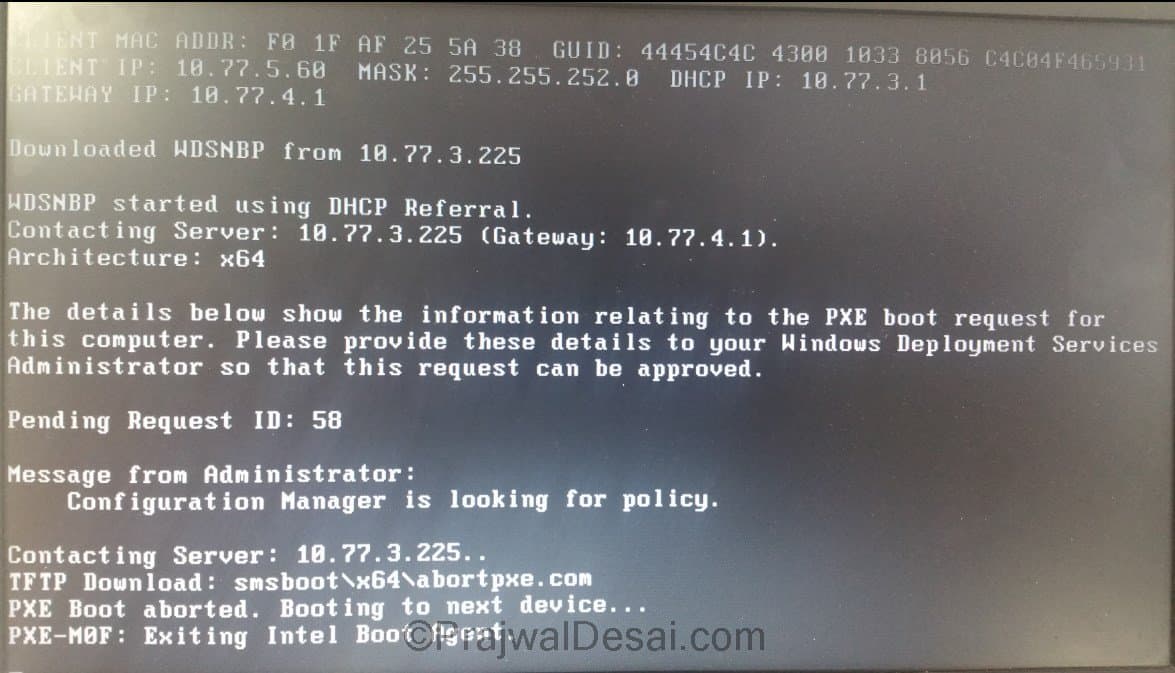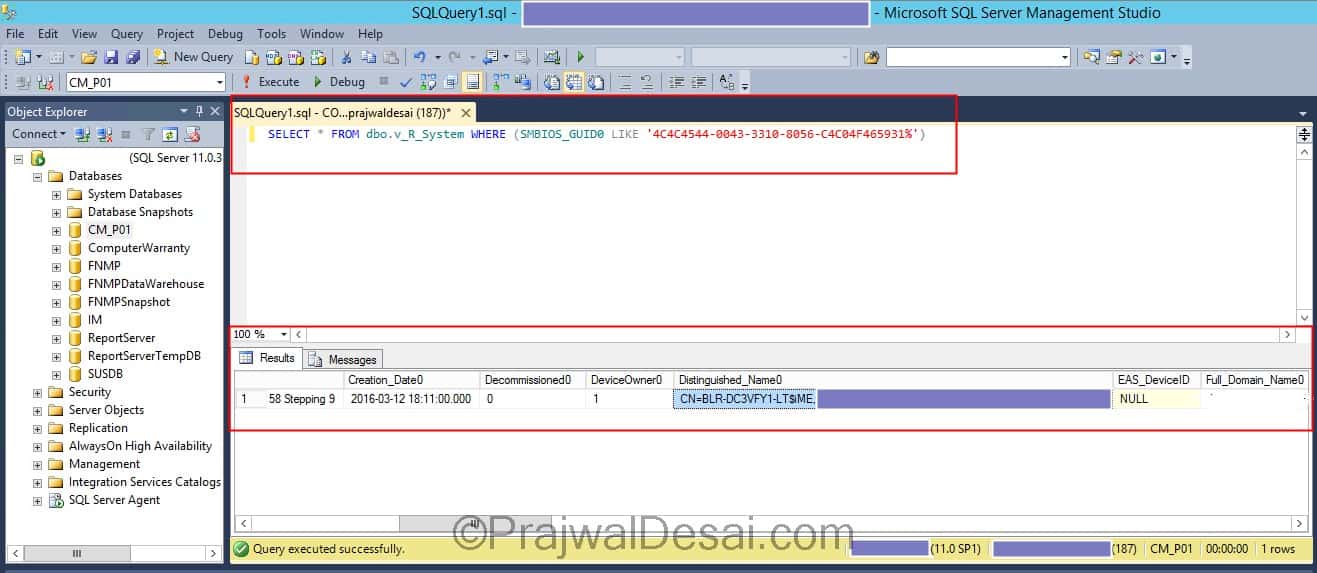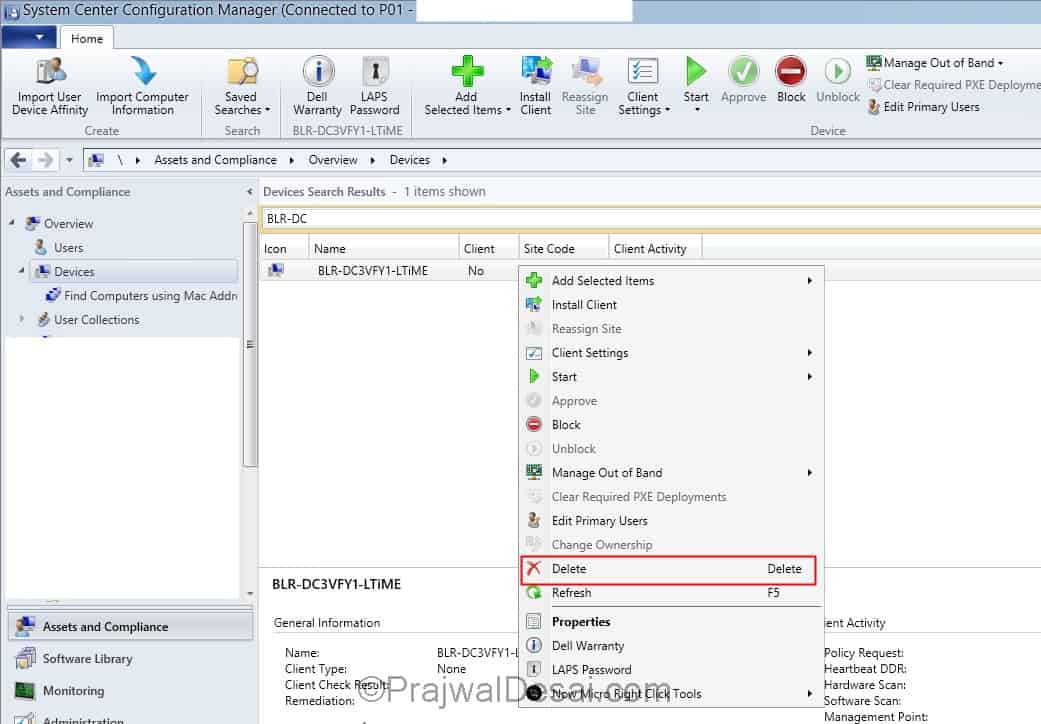SCCM OSD TFTP download smsboot x64 abortpxe.com
SCCM OSD TFTP download smsboot x64 abortpxe – During my visit to customer place, I was told that OSD doesn’t work at all on few machines. I got to see a laptop that had the issue where it wasn’t picking up the task sequence. While on all the other laptops the OSD was working fine, for few specific laptops the OSD wasn’t working at all. I assumed this had to be an issue with the laptops. That wasn’t true and when PXE booted, the laptop didn’t pick up the task sequence, the error was
Contacting server : IP address of DP
TFTP download: smsboot\x64\abortpxe.com
PXE Boot Aborted. Booting to next device…
PXE-M0F : Exiting Intel Boot Agent.
 SCCM OSD TFTP download smsboot x64 abortpxe.com
SCCM OSD TFTP download smsboot x64 abortpxe.com
After performing some checks and troubleshooting, I got to know that it was an old laptop and was not connected to domain since long time. The next step was to investigate SMSPXE.log file located on local DP. In the SMSPXE.log file it clearly showed that the laptop with MAC address and GUID was already in the database. Therefore obsolete computer entry is stored in the SQL database.
F0:1F:AF:25:5A:38, 4C4C4544-0043-3310-8056-C4C04F465931: device is in the database.
 The next step is to find out the computer name using the GUID. Launch the SQL server management studio. Under Databases, right click Configuration Manager database and click New Query. Use the below query to fetch computer details using GUID.
The next step is to find out the computer name using the GUID. Launch the SQL server management studio. Under Databases, right click Configuration Manager database and click New Query. Use the below query to fetch computer details using GUID.
SELECT * FROM dbo.v_R_System WHERE (SMBIOS_GUID0 LIKE ‘GUIDHERE%’)
Press Execute and in the results pane you see a lot of info. Look for computer name shown under Distinguished_Name0.
 In the configuration manager console, search the device using it’s name. Right click and delete the computer name. You could also delete the computer object from active directory.
In the configuration manager console, search the device using it’s name. Right click and delete the computer name. You could also delete the computer object from active directory.


Im losing my mind trying to fix this. Tried every article on google and still getting the same!
Hi, I have this error but when search in the smspxe.log says ‘Device is not in the database’.
I like your articles. 🙂
I’m looking for info what role/function/action has abortpxe.com file ? What for it is dowloaded? Does it display something?
And my big pain… PXE boot problems.
When machine boots from PXE then contacts (broadcast to) simultaneously DHCP server and PXE server. When receive IP from DHCP and has no answer from PXE then it should at least display IP to confirm that IP was assigned. Am I right? It doesn’t need any boot file from PXE to display IP received from DHCP?
I have issue that in one subnet (containing PXE server and without DHCP) one machine receives IP (displays IP) and starts OSD and another cannot start OSD and doesn’t display IP on the boot screen.
When Windows is running then there is no problem to receive IP form DHCP so rely agent works fine. But when booted from PXE it doesn’t display IP so I assume that not receives IP.
They are vmware VMs so I have no idea why it happens.
Dear Prajeal,
Kindly help us to check what are the prerequisites needs to be check while initiating Operating system VIA SCCM
Hey Praj,
So I had this problem, except on the UEFI side and it just quickly shows something on the press enter for network boot service screen and goes to trying IPv6. I remove the devices from Config Manager and AD, but I am still getting the issue. Anything else I could try?
Thanks. It resolved my case.
Glad to hear that.